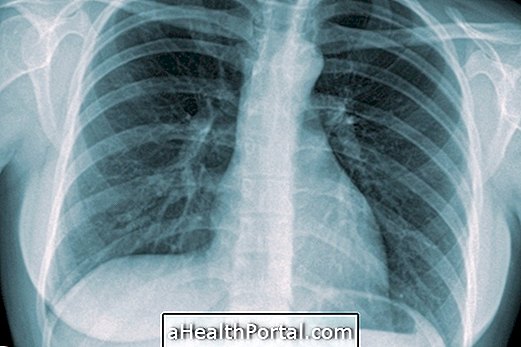Pleurisy, also known as pleuritis, is a condition in which the pleura, which is the membrane that covers the lungs and the inside of the chest, becomes inflamed, generating symptoms such as pain in the chest and ribs, coughing and difficulty breathing, for example.
Pleurisy usually arises due to fluid accumulation between the two layers of the pleura, also known as pleural effusion, and is therefore more common in people with respiratory problems such as influenza, pneumonia, or fungal lung infections. In addition, strong chest strikes can also cause lung damage, resulting in pleurisy.
Whenever pleurisy is suspected, it is important to consult a pulmonologist or general practitioner to confirm the diagnosis and initiate treatment, which in addition to treating the cause, can also be done with anti-inflammatories to reduce discomfort.

Main symptoms
Pleurisy usually causes symptoms related to breathing, such as:
- Intense and constant pain in the region of the chest or ribs;
- Pain that worsens on deep breathing, coughing or sneezing;
- Feeling of shortness of breath;
- Constant cough;
- Persistent fever.
In addition, it is also quite common for the pain to radiate to the shoulders or back, depending on the inflamed site of the pleura and the extent of the injury.
Whenever any of these symptoms arise, it is important to consult a pulmonologist or general practitioner, especially when there is a previous respiratory problem, as it may be a sign of worsening.
Is Pleurisia serious?
Pleurisy is not usually severe, however, it may be a sign that treatment for some breathing problem is not being effective. Therefore, whenever there is suspicion, it is important to consult the doctor to review the treatment.
How to confirm the diagnosis
To confirm the diagnosis of pleurisy, it is usually necessary to consult a pulmonologist and perform tests such as blood tests, chest X-rays, CT scans or ultrasound. In addition, some doctors may also order an electrocardiogram, to spot a possible heart problem that may be causing pain in the chest region.
How is the treatment done?
Usually treatment is started with the use of anti-inflammatories, such as Ibuprofen, to reduce pain and relieve discomfort. However, it is necessary to identify the cause of pleurisy to also make its treatment and prevent the lung membrane from remaining inflamed.
In addition, it is also advisable to maintain rest, avoiding efforts that may lead to increased respiratory rate, such as running or climbing stairs, for example.
The use of respiratory physiotherapy may also be indicated, and in these sessions, lung exercises are used to recover all respiratory capacity as the pleura ceases to be inflamed. Learn more about this type of physiotherapy.























